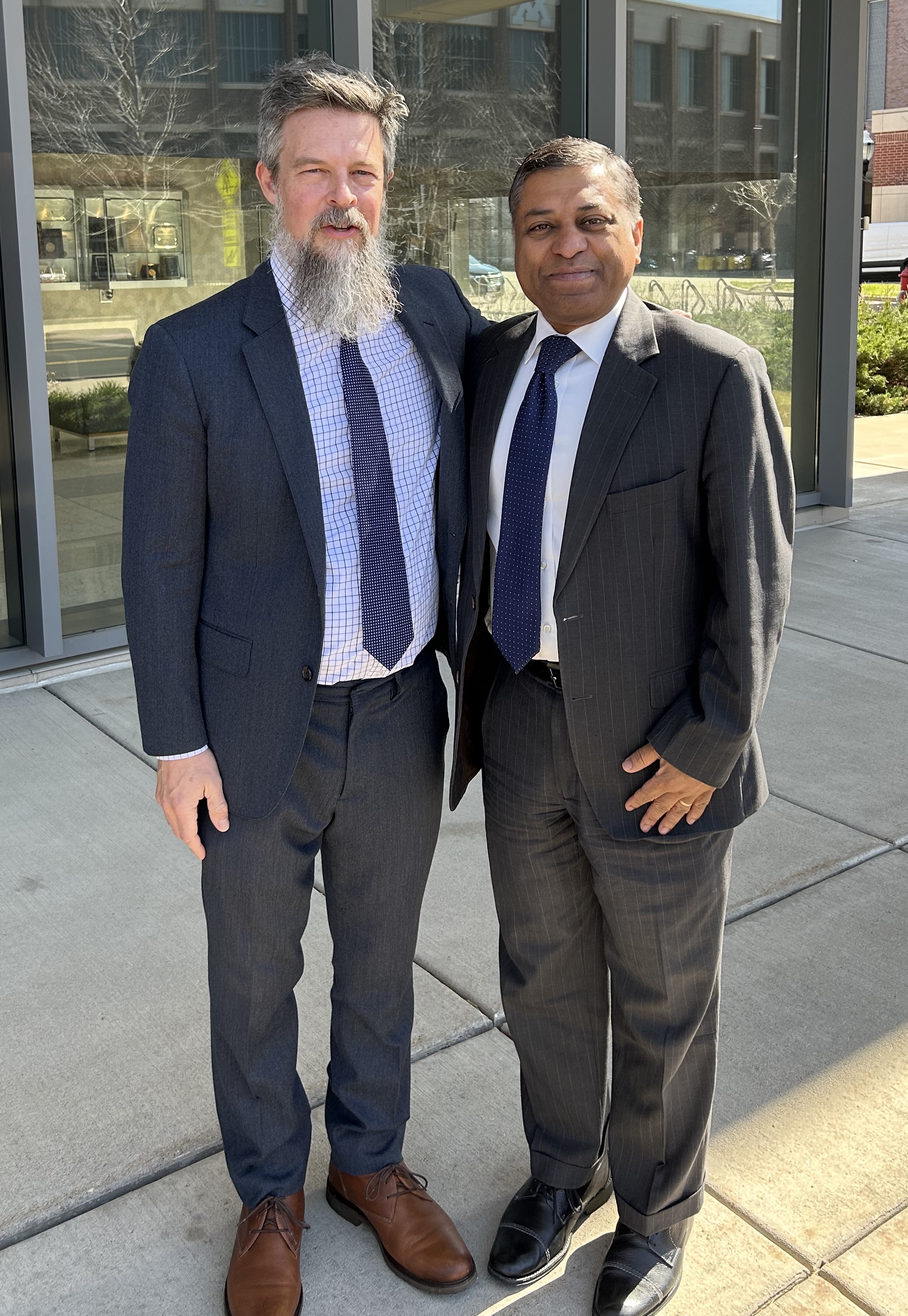News and Events

Director of National Drug Control Policy Visits MDTA
Dr. Rahul Gupta, Director of the White House Office of National Drug Control Policy (ONDCP), contacted the UMN to visit with students and faculty while he was in Minneapolis last week. As director of the ONDCP, Dr. Gupta is responsible for coordinating the National Drug Control Strategy which includes a budget of over $40 billion and 19 different federal agencies. Dr. Gupta is the first researcher and medical doctor to lead the ONDCP.
The current strategy created by Dr. Gupta and his team focuses largely on the ongoing overdose epidemic and will try to address both "untreated addiction and drug trafficking profits". The plan also embraces harm reduction strategies more than any previous regime, stating that the current strategy will be "based on the best science, evidence, and data available, and strives to usher in a new era of drug policy centered on individuals and communities."

During his visit Dr. Gupta went on a tour of CMRR led by CMRR director Dr. Kamil Ugurbil with community leaders engaged in addiction and recovery in Minnesota. He also met with a group of students and researchers in the MDTA at different stages of their careers from undergraduate researcher to graduate student to residents and postdocs to early stage faculty. Finally, he held a question and answer session with members of the MDTA over lunch to discuss current efforts to create new effective treatments and better strategies to implement harm reduction and recovery support services to all communities.
2022 MDTA and Center Pilot Program Awardees
Drs. Vulchanova, Stone, and Lee
Drs. Vulchanova, Stone and Lee will investigate comorbidity of alcohol use disorder and chronic pain. Specifically, the group will examine changes in pain perception in response to chronic alcohol exposure. Their working hypotheses are: “a) alcohol exposure will increase the severity and duration of pain, and b) extensive overlap will be observed between alcohol withdrawal-driven and pain-driven neural activation patterns.” This study will also partner with the Center for Neural Circuits in Addiction’s Structural Circuits Core for traditional and CLARITY-based imaging to characterize neural circuits activated by both alcohol withdrawal and chronic pain.
Dr. Spencer
Dr. Spencer’s team will be investigating changes in neural activity during withdrawal and relapse behavior following prolonged cannabis use. Thegroup will look at c-Fos expression in rats following cannabinoid use and during withdrawal, as well as expression associated with cue-reactivity in the context of relapse-like behavior. They will be partnering with theCenter for Neural Circuits in Addiction’s Structural Circuits Core for technical assistance in tissue clearing and advanced cleared tissue light-sheet microscopy. As more states (including Minnesota) begin to legalize different forms of cannabis use, studies examining aspects of cannabis use disorder are becoming increasingly important.
2021 MDTA and Center Pilot Program Awardees
Drs. Cvetanovic and Mermelstein: “Cocaine Actions on the Cerebellum Influence Drug Reward”
Drs. Cvetanovic and Mermelstein will investigate how cocaine actions on the cerebellum influence drug reward: Drs. Cvetanovic and Mermelstein write: recent “studies suggest that cocaine promotes activation of the neurons in deep cerebellar nuclei that in turn modulate the reward circuitry within the brain. However, the identity of the neuronal cell types comprising the cerebellum-VTA circuit and whether cerebellar activation is required for the rewarding effects of cocaine remain unknown. This proposal seeks to answer these questions.”
Drs. Groman and Zimmermann: “Neurodevelopmental circuits underlying decision-making and addiction susceptibility”
Drs. Groman and Zimmermann will investigate the circuit development that occurs during adolescence and impacts: “Adolescence is a critical developmental stage in which the brain undergoes a profound reorganization, including the formation and stabilization of neural circuits that are involved in decision making and addiction. We have recently demonstrated that value-based decision-making improves across adolescent development in the rat and is related to the reinforcement-learning mechanism that predicts drug use in adulthood. We hypothesize that these decision-making improvements are due to age-related changes in the amygdala-OFC circuit and, specifically, that measures of amygdala-OFC connectivity during adolescent development could serve as a noninvasive biomarker of addiction susceptibility in humans. This proposal will test these hypotheses by combining sophisticated decision-making assessments with in vivo MR neuroimaging, drug self-administration, optogenetic approaches, and ex vivo tractography across adolescent development in the rat.”
Drs. Redish and Saunders: “Novel use of dual-channel fiber photometry for simultaneous measurement of norepinephrine and dopamine in rat medial prefrontal cortex”
Drs. Redish and Saunders will develop dual-channel fiber photometry for simultaneous measurement of norepinephrine and dopamine in rat medial prefrontal cortex. Drs. Redish and Saunders write: “Addiction is characterized as a breakdown of decision-making processes. A central brain area in decision making is the medial prefrontal cortex (mPFC). An often-underappreciated component of mPFC processing is the role of dopamine (DA) and norepinephrine (NE) as neuromodulators. Careful study of the dynamics of these modulators has historically been difficult, but new advances in imaging techniques and fluorescent biosensors have begun to open the door. The goal of this project is to develop the capability of dual-channel fiber photometry capable of measuring DA and NE levels simultaneously yet separably from behaving rats."